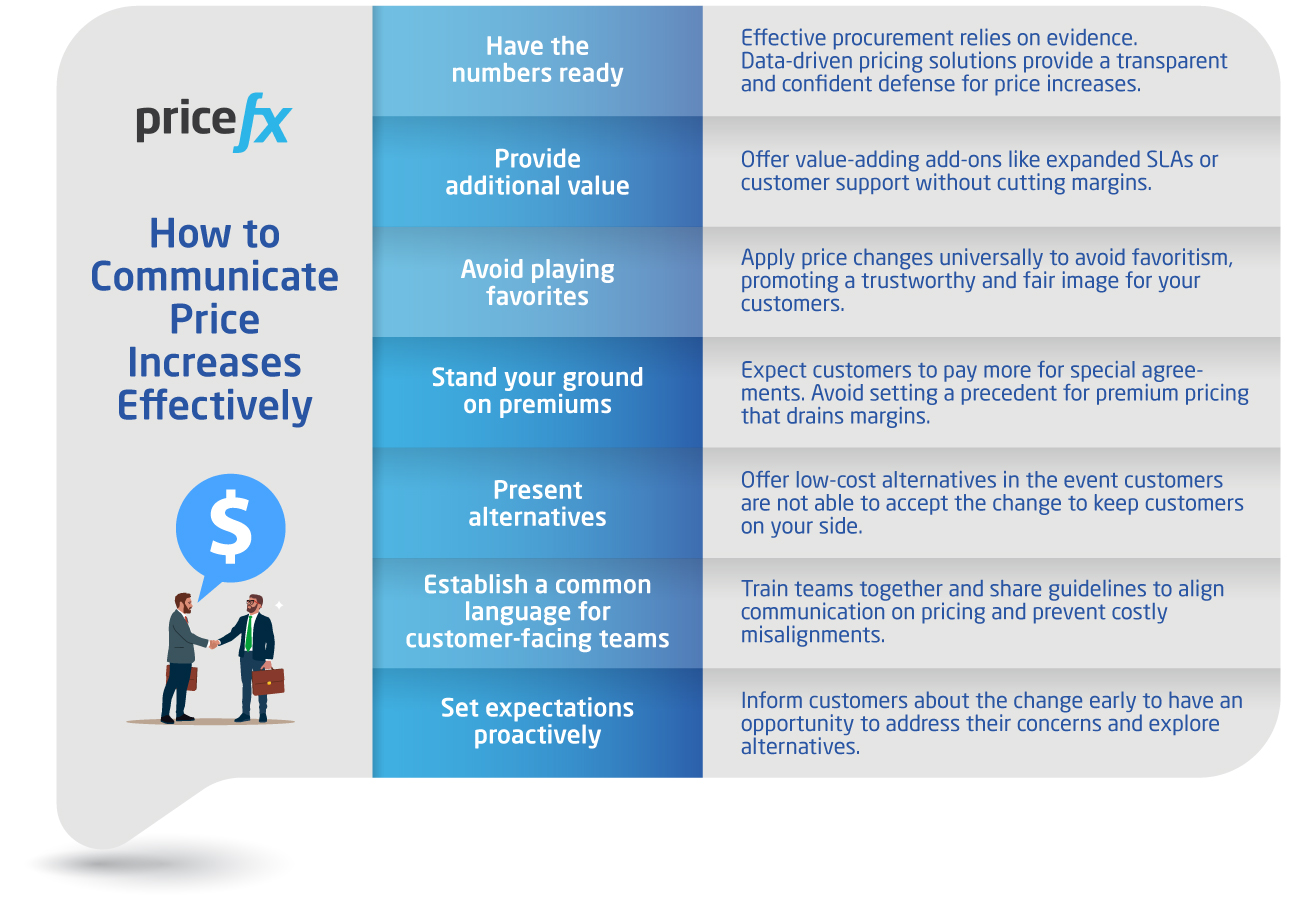Most enterprise-level pricing today is a complex cocktail of unpredictable (and often unfavorable) economic conditions and rapid change driven by modern pricing strategies that adapt quickly to the market, leading to higher prices than customers have seen historically. The result: mounting pressure on sales teams to offer short-term discounts, maintain historical prices cutting into margins, or match their competitors to meet targets and keep their customers happy. Now more than ever, businesses need to be strategic about how they communicate price increases to their customers to stay competitive.
Here at Pricefx, our cloud-native pricing software has transformed the way businesses achieve alignment between sales execution and pricing, and this includes empowering sales teams with data-driven tools to defend price changes with confidence.
In this article, we break down strategies that sales teams, among other customer-facing teams, can use to navigate difficult conversations around price increases and avoid alienating their customers.
Have the numbers ready
Often, procurement teams do not take issue with the price increase itself; they just need evidence to understand the change. Having supporting documentation on hand in negotiations not only lends itself to more satisfactory reasoning for customers but also enables sales teams to understand the price increase themselves.
Pricing solutions with data-driven features such as price setting, optimization, or analytics provide the numbers with which sales can defend a price increase with transparency and confidence.
Provide additional value
When passing on a price increase, offering something in return for paying more can help soften its impact, making it more palatable to your customers. Consider throwing in add-ons that do not cut into margins but still add value, such as an incremental expansion of your service level agreements (SLA) or customer support.
Avoid playing favorites
In response to external economic pressures, price changes should apply to your entire customer base to protect margins, not only to your least strategic customers. While communicating a price increase to key accounts can be intimidating, taking an egalitarian approach positions your company as trustworthy and avoids accusations of favoritism. That said, this is dependent on how much customers are willing to accept as a price increase.
Stand your ground on premiums
Do not shy away from enforcing premium prices. Customers should always expect to pay more for special agreements like expedited delivery or extended payment terms; they are likely to take the same approach in their own pricing. Leaving too much room for negotiation on premium pricing can set a precedent that extends to other agreements, potentially leading to a flood of similar requests.
Present alternatives
As it happens, there are cases when no amount of reasoning or complimentary servicing can prevent a customer from rejecting a price change. When the revised price is unsustainable for a customer, having alternative offers ready, like low-cost options with a more basic service package, is a good preventative measure to keep a cost-conscious customer in your corner and away from competitors.
Establish a common language for customer-facing teams
Misalignments in price communication across sales, pricing, and customer service roles inevitably lead to a situation where the most lenient approaches set a precedent for the entire organization. Participating in cross-functional training sessions and sharing a guideline for defending price changes ensures that all customer-facing teams have a unified front whenever prices increase.
Set expectations proactively
Customers should be given notice of a price change well ahead of the invoicing period to make space to share concerns and avoid feeling blindsided. If given adequate time to discuss the factors contributing to the increase, customers feel heard and are more likely to accept the change; at the very least, they will be open to exploring alternative agreements.

Pricing Software Promotes Better Alignment Between Sales Execution and Pricing Strategy
When facing economic downturn, adopting modern pricing strategies such as dynamic pricing, or simply cleaning up margin-draining accounts, your company should be able to defend its pricing decisions. The key takeaway here is to demonstrate empathy for a customer’s perspective while still standing your ground.
To learn more about where sales execution and pricing meet and how sales teams can benefit, consider checking out our article on aligning pricing strategies with sales execution:
